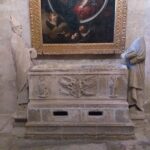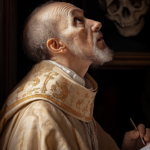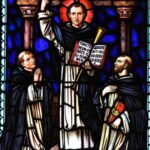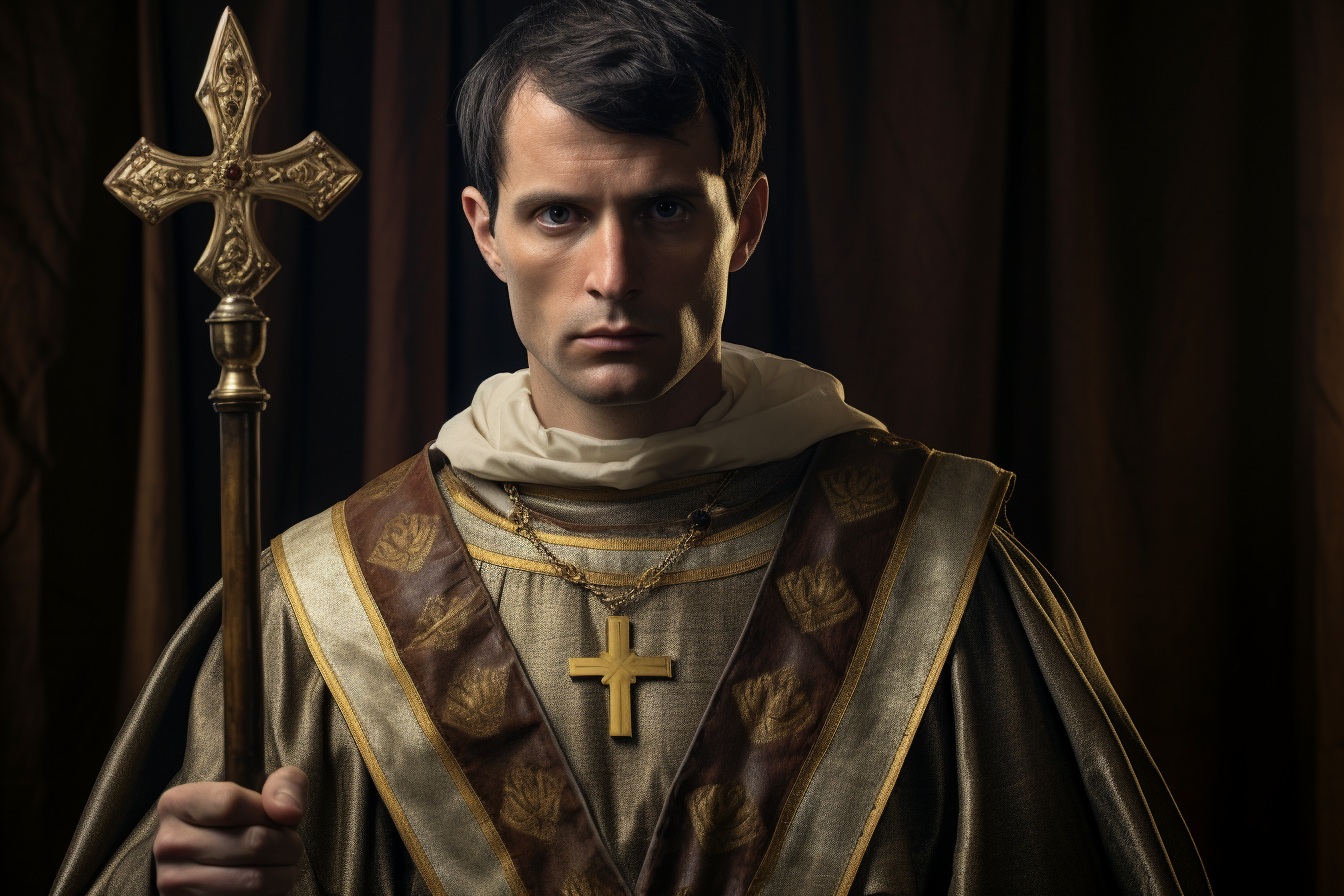
St. Martin of Tours
St. Martin of Tours
St. Martin of Tours
When they lived:
St. Martin of Tours, also known as Martin the Merciful or Martin of Tours, lived from AD 316 to AD 397.
Where they lived:
St. Martin of Tours was born in Sabaria, Pannonia (modern-day Szombathely, Hungary), and he spent much of his life in what is now France.
Notable world events during the time of their life:
- Roman Empire’s Decline: During St. Martin’s life, the Roman Empire was experiencing significant political, economic, and military challenges, leading to its eventual decline and fragmentation.
- Barbarian Invasions: The 4th century was marked by numerous invasions of barbarian tribes into the Roman Empire, which further weakened its borders and contributed to its eventual collapse.
- Edict of Milan: In AD 313, the Edict of Milan was issued, granting religious tolerance to Christians within the Roman Empire, significantly improving the situation for Christians like St. Martin.
- Council of Nicaea: In AD 325, the First Council of Nicaea was convened, addressing theological disputes and leading to the formulation of the Nicene Creed, which remains an essential statement of Christian faith.
- Life of St. Augustine: St. Augustine of Hippo, one of the most influential Christian theologians, lived during the same time as St. Martin. His works profoundly impacted Christian philosophy and doctrine.
- Fall of Rome: After St. Martin’s death, the Western Roman Empire faced further turmoil and eventually fell in AD 476, marking the end of ancient Rome.
Patronage:
St. Martin of Tours is the patron saint of several diverse causes, including soldiers, conscientious objectors, beggars, tailors, winemakers, geese, and the country of France. His life as a soldier-turned-bishop, his acts of compassion, and his dedication to serving the poor and marginalized have inspired people from various walks of life to seek his intercession.
A Soldier of Christ
Martin was born to pagan parents in modern-day Hungary around the year 316. His family left that region when his father, who was a military official of the Roman Empire, was sent to Italy. Though his parents were pagans, Martin had an attraction to the Christian faith, which, in 313, had become legal throughout the empire.
However, when he was fifteen years old, Martin was forced to serve in the army. During that time, he became a catechumen and received religious instruction. He was baptized at the age of eighteen. It was said that while he was serving in the Roman army, he lived more like a monk than a soldier. He even considered becoming a hermit in the desert.
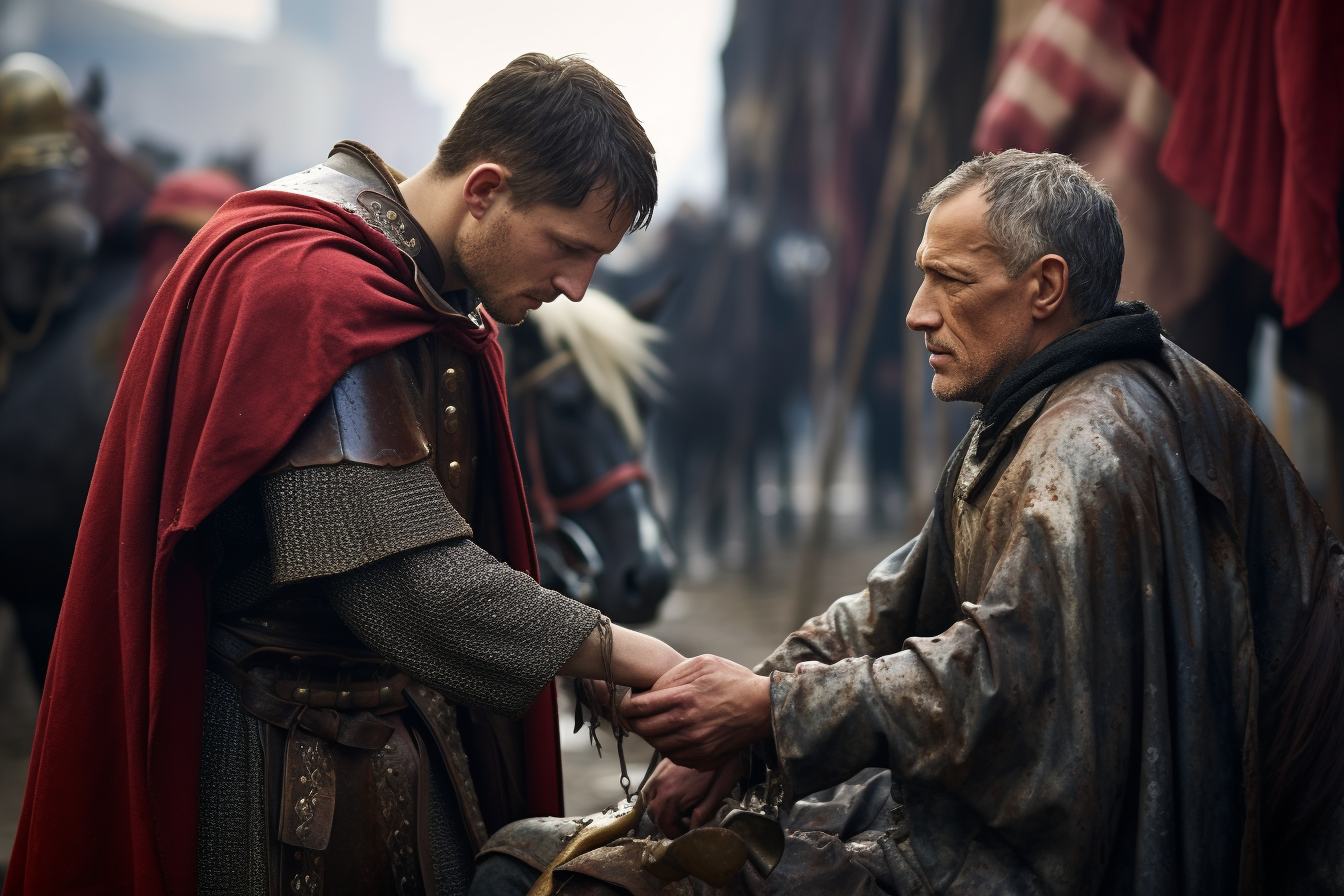
When he was twenty-three, he refused a war bonus and told his commander that he refused to fight because he wanted to become a soldier of Christ. After great difficulties, Martin was discharged from his duties and went to be a disciple of St. Hilary of Poitiers.
The Reluctant Bishop
Martin was ordained an exorcist and worked with great zeal and dedication against the Arians. He eventually became a monk, living first in Milan and later on on a small island. In 360, when St. Hilary was reinstated to his see after his exile, Martin returned to France and founded what may have been the first French monastery near Poitiers on a piece of land granted to him by St. Hilary. He lived there for ten years, formed his disciples, and preached throughout the countryside.
However, the people of Tours insisted that he leave the monastery to become their bishop. Martin had not wanted to become a bishop. He hesitantly allowed himself to be consecrated bishop. Once he transferred to Tours, he continued to live as a monk, dressed plainly, and had no personal possessions. He traveled throughout the diocese, from which he is said to have driven out pagan practices.
The Shepherd Has Left His Flock
Even in his twilight years, Martin continued to live a life of austerity and was focused on the care of souls. His biographer and disciple, Sulpicius Severus, noted that Martin helped all people with their intellectual, moral, and spiritual dilemmas. He also helped a lot of laypeople discover their calling to the consecrated life of poverty, chastity, and obedience.
Martin foresaw his own death and told his disciples about it. But when his last illness came upon him during a pastoral journey, the bishop felt uncertain about leaving his people. “Lord, if I am still necessary to thy people, I refuse no labor. Thy holy will be done,” he prayed. He developed a fever but did not sleep, passing his last several nights in the presence of God in prayer.
In 397, Martin died in France at the age of 8. At his request, he was buried in a cemetery with the poorest of the poor. Soon, pilgrims traveled to his grave at Tours. Today in many countries in Europe, St. Martin’s feast day is celebrated widely. His feast day is November 11.
Five Interesting Facts About St. Martin of Tours
- St. Martin of Tours is the patron saint of France, the father of monasticism in Gaul (France), and the first great leader of Western monasticism.
- St. Martin of Tours became renowned for raising two people from the dead through his prayers.
- One day, when St. Martin of Tours was not yet baptized, while he was on horseback in Amiens, Gaul, St. Martin of Tours encountered a beggar, freezing and without warm clothing. St. Martin stopped, cut his own cloak in half, and gave it to the beggar. That night, he had a vision of Jesus wearing the cloak that he gave to the beggar and saying, “Martin, a catechumen, has clothed Me with this garment.”
- During the Medieval Ages, St. Martin’s cloak (cappa) became a relic that French kings would take into battle. The person whose job it was to care for the cloak was often a priest, and he was called a “cappellani”. It is from this that the word “chaplain” was derived.
- St. Martin of Tours became a bishop because he was tricked! A wealthy citizen of Tours claimed that his wife was ill and asked for Martin. Tricked by this ruse, Martin went to the city, where he was declared bishop by popular acclamation.
Prayer to St. Martin of Tours
O God, who is glorified in the Bishop Saint Martin both by his life and death, make new, we pray, the wonders of your grace in our hearts, that neither death nor life may separate us from your love. Through our Lord Jesus Christ, your Son, who lives and reigns with you in the unity of the Holy Spirit, one God, for ever and ever Amen.

